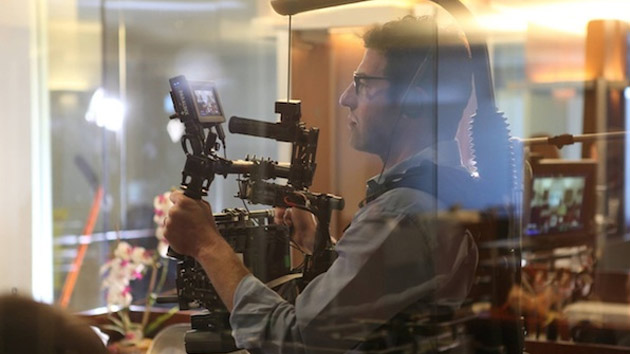Andrew Shulkind, a winner of StudioDaily's 2014 Prime Award for his work as a cinematographer, says he knew early on that lensing films appealed much more to him than writing or directing them. "For me, it was that confluence of lighting and creativity that made me want to do what I do." In addition to the Prime, Shulkind was recently recognized as one of the top emerging cinematographers by the International Cinematographers Guild.
Drifting toward cinematography during film school at NYU and a semester abroad in London, Shulkind eventually landed an internship at Panavision in Los Angeles that led to his first job with the equipment company when he graduated. "I became close with the camera team in L.A. that summer, so when they came to New York to shoot Jerry Bruckheimer's Coyote Ugly, they invited me to join them."
Right out of the gate, Shulkind ended up working alongside some of the greatest cinematographers in the industry, including Amir Mokri, Janusz Kaminski, Darius Khondji, Guillermo Navarro and Don Burgess. "That was my real education," he says. "And I was really lucky. It was kind of a cavalcade of these extraordinary experiences with these extremely talented guys." Working his way up from camera assistant to operator, Shulkind spent a lot of that early time on set operating the Libra Head stabilized remote mount that put cameras on cranes, cars, cables and boats.
"I got into the technology side of the business right away," he says. "As a kid, I was always wanted to know how a movie was made, how certain effects were created and how the psychology of certain images on screen impacted the way I experienced the film."
Andrew Shulkind and SteadiCam operator Jerry Franck shoot a surreal scene from the upcoming series Side Effects.
His easy transition to studio pictures didn't stop him from working on shorter-form projects like the rest of his fellow film school graduates. "I was always shooting something on the side," Shulkind says. "At first, I thought I was outside of the usual trajectory because I started with studio films, but I ended up following a similar path, first operating on commercial projects for cinematographers like Darius Khondji but also shooting videos for Death Cab for Cutie and Old 97s."
When the money dropped out of the music video market around 2009, Shulkind shifted his focus to commercial work, where he says there is still a "lot of room for experimentation, as well as the money to support it." He has shot spots for Budweiser, Apple, Nike and Old Spice, among many others. His third film at Sundance, a short film directed by Brumby Boylston in competition this past January, was shot the same afternoon the pair wrapped a Walgreens commercial.
Shulkind says he is continually drawn to new gear and new workflows that help him solve problems during production. "The kind of gear that I like to work with is rarely about spending a lot of money. It's more about finding a creative way of cutting a corner, doing something faster and easier." Sometimes, as Shulkind found recently when creating a demo for P+S Technik's new Kubrick Lens Collection, the marriage of old and new also nets exhilerating results. Shulkind and director Martina Buckley's short film, shot with P+S Technik's XCAM-35 Mark II, is an artful reminder that the gorgeous, veiled highlights of Kubrick's Barry Lyndon are equally at home in newer digital projects. "I find I do that outside when I'm shooting exteriors," says Shulkind. "I like the idea of shallow focus and it's so atypical to see that outside because it's so bright. When I shoot short-form pieces like that I like to incorporate some test or experiment I'll later use in a commercial or movie."
After working with him on the project, Buckley says she now refers to Shulkind as the "Brain Box," since he always seems to have his finger on the pulse of what's next. "He really is interested in mixing new technologies with the old out of passion for his craft and a genuine pursuit of what is best looking and the most appropriate tool for telling the story," she says. "But he's not a fashion victim; he has his own ideas about how he wants to use new technology."
Crafts: Shooting
Sections: Creativity Technology
Topics: camera operator Cinematography DP prime awards
Did you enjoy this article? Sign up to receive the StudioDaily Fix eletter containing the latest stories, including news, videos, interviews, reviews and more.











